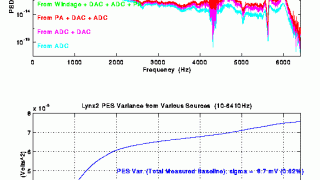
This paper represents a tutorial on the so called PES Pareto methodology of analyzing the sources of noise in a feedback loop. Originally conceived for analyzing noise contributors in magnetic hard disk drives, the method provides a means of systematically identifying uncertainty contributors to a servo loop. Once identified and ranked according to their overall effect on the error and output signals, the top ranking sources can be worked on first, either by finding ways to reduce their magnitude or by altering system components to reduce sensitivity to the the noise contributors.
The PES Pareto Method is based on three ideas: (1) an understanding of how Bode’s Integral Theorem applies to servo system noise measurements, (2) a measurement methodology that allows for the isolation of individual noise sources, and (3) a system model that allows these sources to be recombined to simulate the servo loop’s error signal. The method requires the measurement of frequency response functions and output power spectra for each servo system element. Each input noise spectrum can then be inferred and applied to the closed loop model to determine its effect on error signal uncertainty.
The PES Pareto Method is illustrated by decomposing PES signals that were obtained from a hard disk drive manufactured by Hewlett-Packard Company in the mid 1990s. However, beyond this old lab data, the method should be applicable to a wide variety of control loops.

